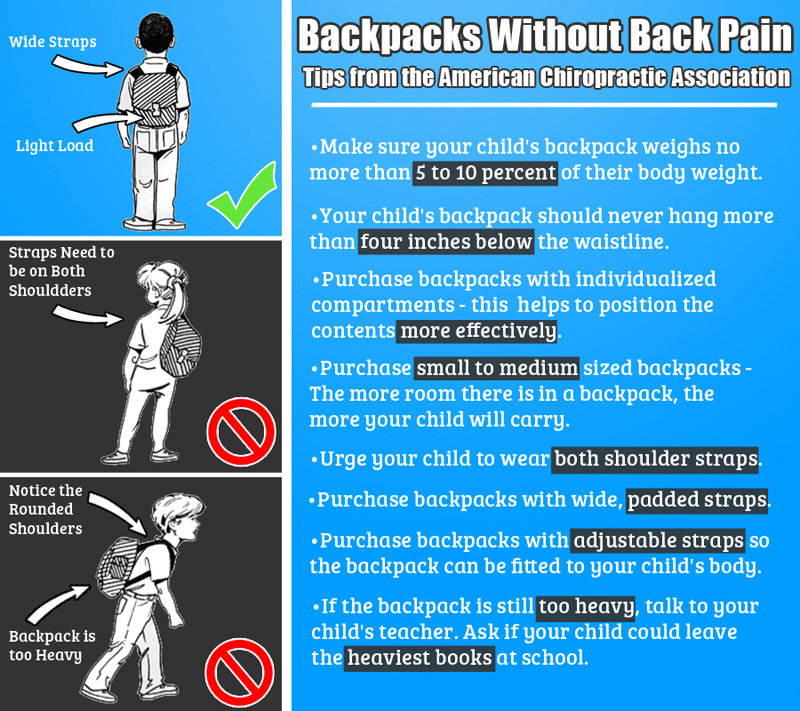
Is your child hunching over? Dragging her way into the house after school or slumping toward the school-bus stop in a weird position?
School can be a pain, literally, for your child if he or she is wearing a too-heavy backpack. According to the US Product and Safety Commission, over 22,000 sprains, strains and fractures were treated by health professionals due to backpacks in 2013.
“Backpack safety has become a large enough issue that it warrants conversation with your child(ren) before the beginning of the school year, with regular reminders during the year,” Maple Valley physical therapist Dr. Amy Konvalin says.
Heavy backpacks seem to be inevitable with many schools either reducing locker size or even eliminating lockers altogether. Many kids say that they simply don’t have the time to stop at the lockers during passing period. So what’s a parent to do?
Buy smart
- Start with a lightweight pack that is the right size for the child. If possible, try it on before purchase, the straps should hold the pack two inches above the waist once adjusted.
- Look for wide, padded shoulder straps and a padded back to reduce stress on the shoulders and lower back.
- For older kids and teens, a pack with a waist strap can help keep the load evenly distributed.
- A rolling backpack can be helpful if allowed by the school, but not if the school has stairs — in which case the backpack will be hand-carried from floor to floor anyway.
Wear it right
- Always wear both straps.
- Pack heavier items toward the back and center of the pack, this is where extra padding can be helpful.
- Use the compartments wisely to distribute the weight.
- Lift with the knees to pick up the pack and put it on.
- Every few days, check that your kid is wearing the backpack correctly. Straps loosen over time.
- A full pack should weigh no more than ten percent of the child’s weight. So, a 60-pound child shouldn’t have a pack that is more than six pounds. Bathroom scales are generally inaccurate for lighter weights, so weigh your kiddo with and without the backpack, and then do the math to figure out the weight of their backpack.
- Carry only the books needed for each day, and clean out the backpack often to lighten the load.
Most importantly, be on the alert for injuries due to packs. If your child is complaining of pain that you suspect is due to his or her backpack, recheck the weight of the pack and the way in which it is being worn.
“If your child should complain of back, neck, or shoulder pain, have them use ice for five minutes three times per day for two to three days on the affected area. If the injury does not get better after two to three days, call your doctor to have the child evaluated for a possible sprain/strain injury. If left unresolved, backpack injuries can lead to repetitive stress injuries which can sideline them from other activities,” Konvalin advises.












